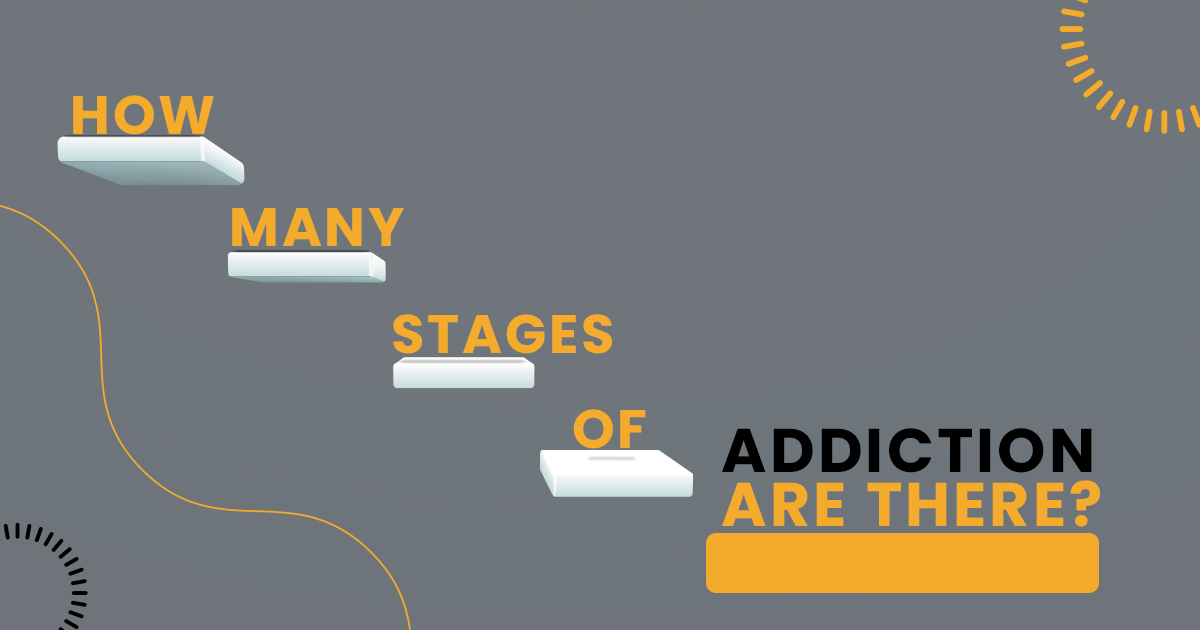Substance Use Disorder, or SUD, is a mental disorder that affects an individual’s brain and behavior. SUDs make individuals struggle to regulate their use of substances, including alcohol, medications, drugs, and other addictive substances. SUD is often conflated with the word ‘addiction’ and treated as the same thing; however, this is not the case, as SUDs have multiple stages, with addiction being the final stage.
Understanding the 4 Stages of Addiction
Professionals generally agree that there are four main stages to SUDs: experimentation, regular use, high-risk use, and finally, addiction (Phoenix House Florida). This article will give an in-depth look at each of these stages.
Experimentation
At this stage, the use of the substance is minor. Many people enter this stage saying that they are only trying the substance ‘once’– however, this one interaction can already open the door to addiction. While most substances rarely produce negative consequences on the first taste, some drugs can have such effects. One example of this is heroin.
To outsiders, individuals struggling with addiction may seem as if they had abruptly gotten into the substance. This experience is especially true with substances with many addictive qualities.
While an individual attempting substances may be unexpected, it’s important to remember that many factors precipitate someone trying a substance. According to the Families for Addiction Recovery, some of these factors are:
- Genetics
- Trauma
- Developmental factors (Family, early use)
- Personality traits, such as addictive behavior
- Social isolation
- Mental illness or other mental health issues (depression, anxiety, etc.)
Risk factors are not minor; research has shown that genetics have been shown to raise 40%-60% of the risk of a SUD. It’s also important to note that many of these factors are out of the individual’s control; many individuals try substances to seek release or escape. The factors above cause higher rates of stress in an individual’s lifetime.
Regular Use
At this stage, the use of the substance becomes occasional. Others who use the substance may know their limits and stop themselves from becoming addicted, but those affected by risk factors may begin to show some high-risk behaviors. Examples of these include binge drinking and driving under the influence. By using the substance more frequently, the substance becomes routine and part of daily life.
During this stage, the individual’s tolerance for the substance has risen. As the individual uses more of the substance, so does their ability to tolerate it, making them need more and more to feel more and more of the effect the substance gives. This can result in the next stage, which is high-risk use.
High-Risk Use
While an individual with SUD continues to have normal, everyday life elements, the substance begins to take precedence over everything else. This includes major parts of life, such as career and family life. The high-risk behaviors shown in the regular use phase are becoming more and more common. Finally, cravings and withdrawals begin to affect the individual, driving them to take more and more of the substance until they reach the stage of severe addiction.
Addiction
An individual struggling from severe addiction finds it incredibly difficult, if not impossible, to focus on anything else but the substance they use. Even as they attempt to cut themselves off, cravings and withdrawals make them want to use the substance again. Cravings and withdrawals are obvious; symptoms include shaking, fatigue, irritability, and more. Although the individual may want to stop, they will find that they cannot, having developed both psychological dependence and physical dependence.
Formally, doctors and psychologists use the DSM V (Diagnostic and Statistical Manual of Mental Disorders Five) to diagnose addiction. Symptoms include:
- Using in larger amounts or longer than intended (substance abuse)
- Want to cut down/stop using, but not managing to
- Experiencing relationship problems based on substance use
- Spending large amounts of time seeking or using the substance or recovering from use
- Reducing participation in once liked activities in favor of substance use
- Being unable to keep up with daily responsibilities due to substance use
- Craving the substance
- Continuing to use the substance despite negative health effects, physical or mental, or dangerous situations, ie, destructive behavior
- Developing tolerance for the substance
- Experiencing withdrawal symptoms when use is stopped
Those who are in the stage of high-risk use may fall into a mild substance disorder (experience 2-3 symptoms). If they experience more (4-5 symptoms), then they are considered to experience a moderate substance disorder. Six or more symptoms are a severe substance use disorder or an addiction.

Recovery (Relapse)
In all these stages, you can always attempt to recover. It is always best to get help as early as possible, especially if you know that you have some of the risk factors listed above.
Although the media often portrays recovery as a road you only have to face once, however, in reality, relapses are common. If you relapse, understand that it is normal; 40-60% of people relapse after reaching the phase of addiction. It may feel easy to blame yourself, but a relapse occurring simply shows that the treatment needs to change. While those with a SUD can cut off substances from their life on their own, it is a difficult task, and support networks can make the journey much easier. For example, doctors can help pinpoint early signs of a relapse and provide a treatment plan, while friends and family can provide emotional support. Therapy is also frequently used when dealing with addiction, whether done individually or through mutual-support groups.
Getting Treatment in Southern California
Medical professionals may put addiction in stages, but this does not mean that you have to become worse to get help. It is always better to get the help you need as soon as possible for both yourself and those around you.
If you are struggling with any stage of a SUD, our counselors can help. Call Silver Lining Recovery at 833-844-4769 to learn about the variety of treatment options available for you in Southern California.

